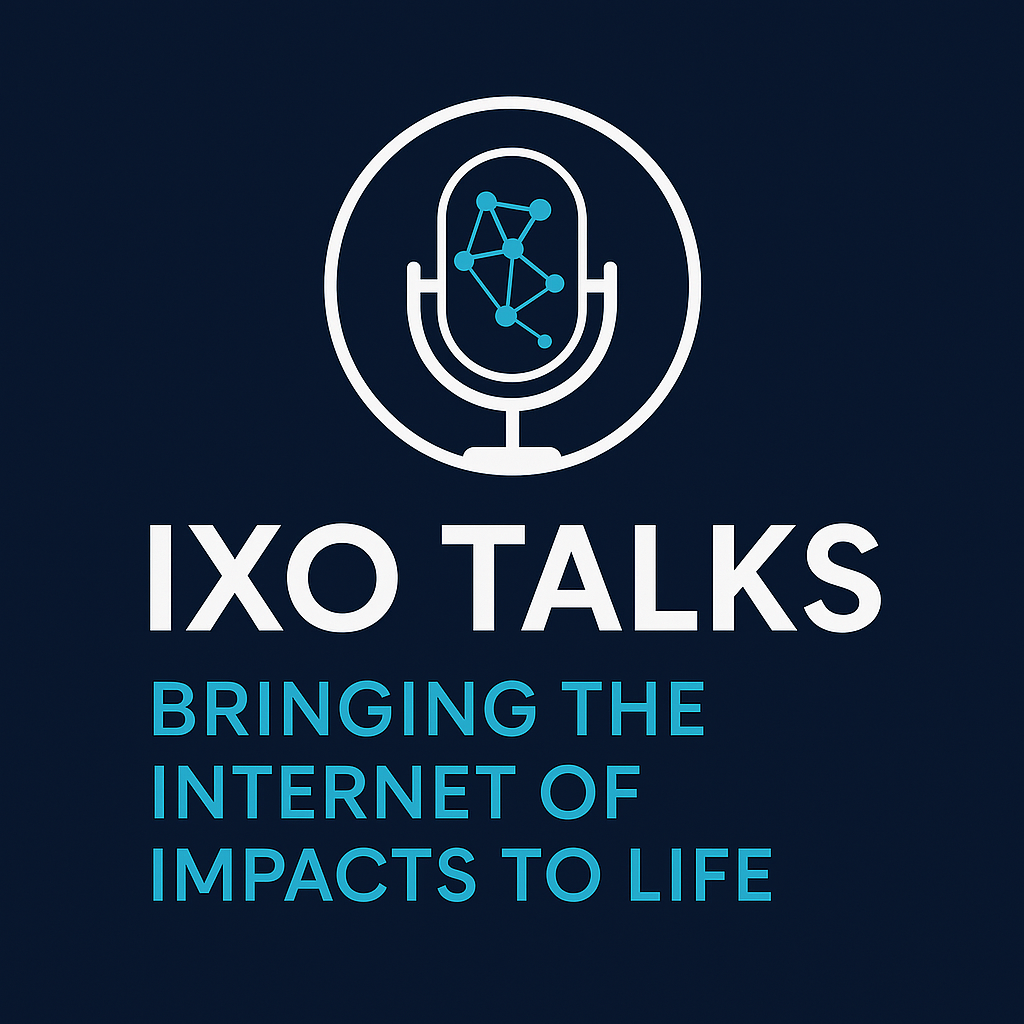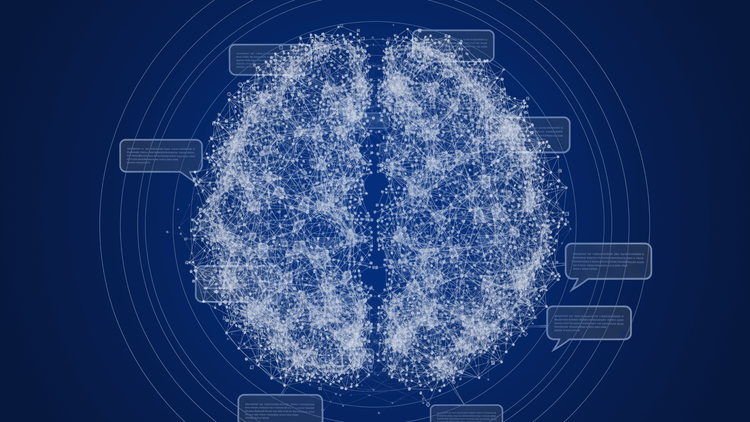
Right now, most of the debate about AI’s energy use is stuck at the data-centre layer: chips, cooling, new nuclear, PPAs. Meanwhile, the real waste is happening higher up the stack – in how we design and use “intelligence” itself.
And that’s a problem for anyone building systems that are supposed to serve people and the planet, not drain them – including what we’re doing with IXO and the Qi intelligent co-operating system.
AI’s energy problem lives at the application layer
We now have enough evidence to say this clearly: the majority of AI’s energy use is no longer training, it’s inference – the everyday act of answering prompts and serving model outputs at scale.
Google, Meta and others report that 60–70% of their AI energy is now consumed by inference rather than training. Studies of production workloads show that inference can make up 80–90% of total ML compute demand.
One query to a large model isn’t a big deal. Billions per day are.
We are on a trajectory where:
- Every product wants an “AI feature”.
- Every workflow wants an agent.
- Every decision wants a model in the loop.
If we treat all of those as equally urgent, equally important, and all worthy of the biggest frontier model, we get a simple equation:
Lazy intelligence = maximal energy, minimal discernment.
Even the cleanest data centre cannot compensate for that.
What lazy intelligence looks like
Lazy intelligence is not about model accuracy. It’s about how little thought goes into when and why we invoke intelligence at all.
It shows up as:
- Sending every request to the largest, most expensive model “just to be safe”.
- Running agents in endless loops because it’s easier than designing a proper flow.
- Triggering real-time inference for things that could be batched or done offline.
- Treating a casual query the same as a high-stakes decision.
- Ignoring when the grid is dirtiest and energy is most constrained.
This isn’t just an energy problem. It’s governance failure disguised as convenience.
In AI, every inefficiency appears twice:
- Once as wasted energy and emissions.
- Once as wasted dollars that could have funded real outcomes.
For organisations like IXO that work on climate, health and social impact, that double waste is unacceptable. You cannot credibly measure carbon, fund mitigation activities, and then let your own intelligence layer behave like there’s no budget for attention or energy.
The invisible meter: we don’t measure what we burn
Part of the problem is that most teams have very little visibility into the energy and carbon footprint of their AI usage.
Research frameworks and tools – from carbon-accounting approaches like Green Algorithms to software-level standards like the Green Software Foundation’s Software Carbon Intensity (SCI) – show we can measure emissions per unit of software usage.
But in most AI products, users see none of this. They see a chat box. Behind that box:
- No visible cost per prompt.
- No indication of which model they’re hitting.
- No feedback on whether the same result could have been served more efficiently.
When the meter is invisible, lazy intelligence feels free.
Qi and IXO: designing for energetic, not lazy, intelligence
At IXO we think about intelligence in terms of flows and cooperation, not just models.
Qi.Space is our intelligent co-operating system that has been designed to coordinate humans and AI agents through verifiable flows that turn intent into outcomes. We are building this in a way that gives us leverage to tackle energy and attention waste by design, not as an afterthought.
Here are some of our design principles:
1. Intent before inference
Not every question deserves a GPU. In Qi, the starting point is explicit intent: What is the user trying to achieve? What is at stake? What kind of decision is this?
Once intent is clear, the system can:
- Route to the smallest sufficient model, not the biggest available.
- Prefer retrieval and structured knowledge for questions that don’t need generative reasoning.
- Use deterministic, rule-based logic for policy or compliance checks where that’s more appropriate than generation.
- Defer or batch non-urgent tasks instead of executing them immediately.
Designing flows around intent turns “ask the model and hope” into structured, auditable cooperation between agents, services and humans.
Lazy intelligence sends every question straight to the frontier model.
Energetic intelligence asks: what is the lightest thing that will do the job reliably?
2. Right model, right place, right time
The AI energy literature is converging on a simple insight: carbon-aware scheduling and placement of computation can cut emissions materially by aligning workloads with cleaner energy and more suitable hardware.
For a system like Qi that sits above multiple services and infrastructures, that translates into patterns like:
- Running heavy training or re-indexing tasks during cleaner grid windows where possible.
- Keeping some inference local or at the edge when bandwidth and latency make that efficient – especially for devices in the field in energy or health programmes.
- Preferring specialised, efficient models for repetitive tasks instead of generic behemoths.
The point isn’t to freeze innovation. It’s to make placement and timing first-class design decisions, not accidents.
3. Flows that budget energy like they budget money
IXO already treats value flows seriously: who can commit funds, under what conditions, tied to which verifiable outcomes.
We should treat energy in a similar way.
Imagine if each flow in Qi carried:
- A notional energy budget and carbon budget.
- A default path that uses light models and cached intelligence.
- Escalation paths where heavier models or more agents can be invoked – but only when the stakes justify it.
For example:
- An impact oracle checking a routine claim about cookstove usage might use a lightweight classifier plus cached device history.
- Escalation to a more complex causal model or external oracle would require specific conditions (anomaly, dispute, novelty) that justify extra energy and cost.
In other words: every extra unit of intelligence should have to argue for its own existence.
4. Observability that includes energy, not just latency
Modern observability stacks tell you about latency, uptime, error rates and costs. Very few tell you about the carbon per API call, or the embodied emissions per unit of “intelligence served”.
That needs to change.
The kind of observability layer we want around Qi and IXO’s agent networks would connect:
- Usage: which flows, which agents, which models.
- Cost: tokens, compute, human review time.
- Energy & carbon: estimated or measured emissions per operation, aligned with SCI-style metrics.
- Outcomes: what real-world effect did this actually have?
Only when all four are visible in one place can we make good trade-offs:
- Is this model worth its cost and carbon for this task?
- Is this agent loop actually improving outcomes, or just generating activity?
- Where are we burning energy on low-impact noise?
For an impact-driven ecosystem, those questions are not “nice to have”. They’re core to governance.
5. Respecting human and social energy
There is another kind of energy at stake: human attention and organisational willpower.
Lazy intelligence erodes both:
- Teams rely on AI to write documents nobody reads.
- Agents trigger notifications and tasks that clog workflows instead of clarifying them.
- Decision-makers are overwhelmed by synthetic options instead of supported in making real commitments.
Qi’s job, as an intelligent co-operating system, is to amplify human agency, not anaesthetise it. That means:
- Fewer, better prompts – shaped by flows, not by addiction to chat interfaces.
- Agents that close loops and reduce noise, not create more of it.
- Interfaces that surface trade-offs clearly (“this path is cheaper in energy but slower in time”) instead of burying them.
If the humans in the loop feel more drained and confused after “AI transformation” than before, something has gone wrong at a very basic level.
Lazy intelligence vs. civilisation-scale problems
IXO exists because we believe we can encode better values into better systems – and that those systems can help us cooperate at the scale required for climate, health and social justice.
But we won’t get there by pretending intelligence is free.
When AI already contributes meaningfully to data-centre and electricity demand, and that demand is projected to rise sharply, then “spray and pray” prompting is not harmless experimentation. It’s part of the externality.
If we’re serious about things like:
- Financing clean cooking at scale,
- Running pathogen genomics platforms responsibly,
- Or stewarding tokenised impact economies,
…then we have to be equally serious about how our own intelligence infrastructure behaves.
Lazy intelligence sucks energy / Energetic intelligence stewards it.
A few questions I’m sitting with
As you think about your own products, agents and AI roadmaps:
- Where are you sending work to a frontier model just because it’s there, rather than because it’s needed?
- If your users could see a live “energy and carbon meter” for their prompts and agent runs, what behaviours would suddenly look irresponsible?
- What would change in your design if you treated energy, attention and trust as scarce resources that your AI must earn, not consume by default?
Because in the end, the goal is not smarter software for its own sake. It’s smarter cooperation – with each other, with our institutions, and with the planet that’s quietly paying the energy bill.
Qi is the intelligent co-operating system for turning your shared intent into verifiable outcomes.




